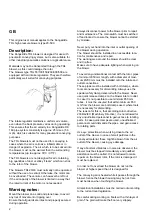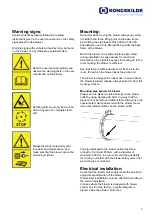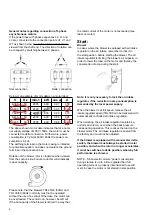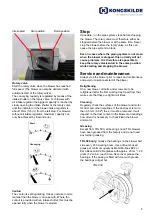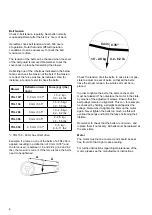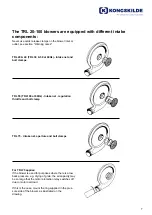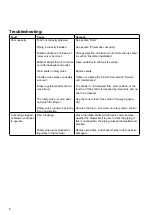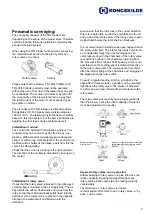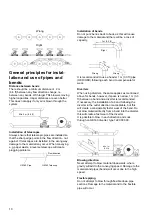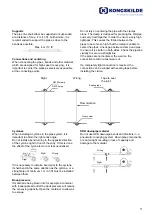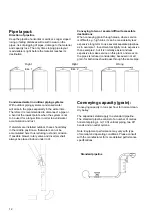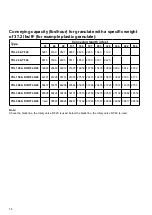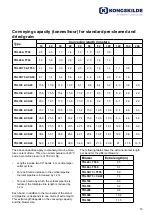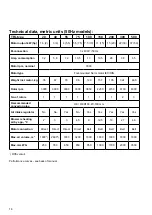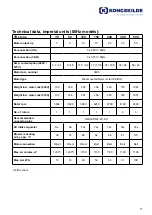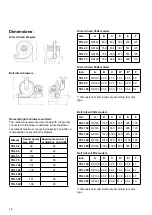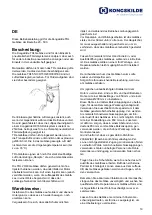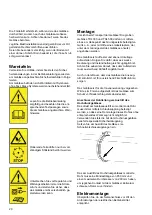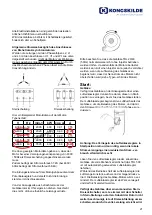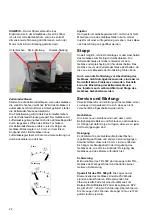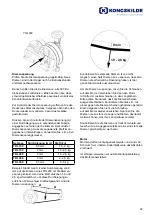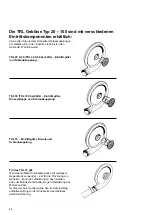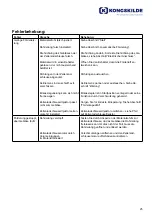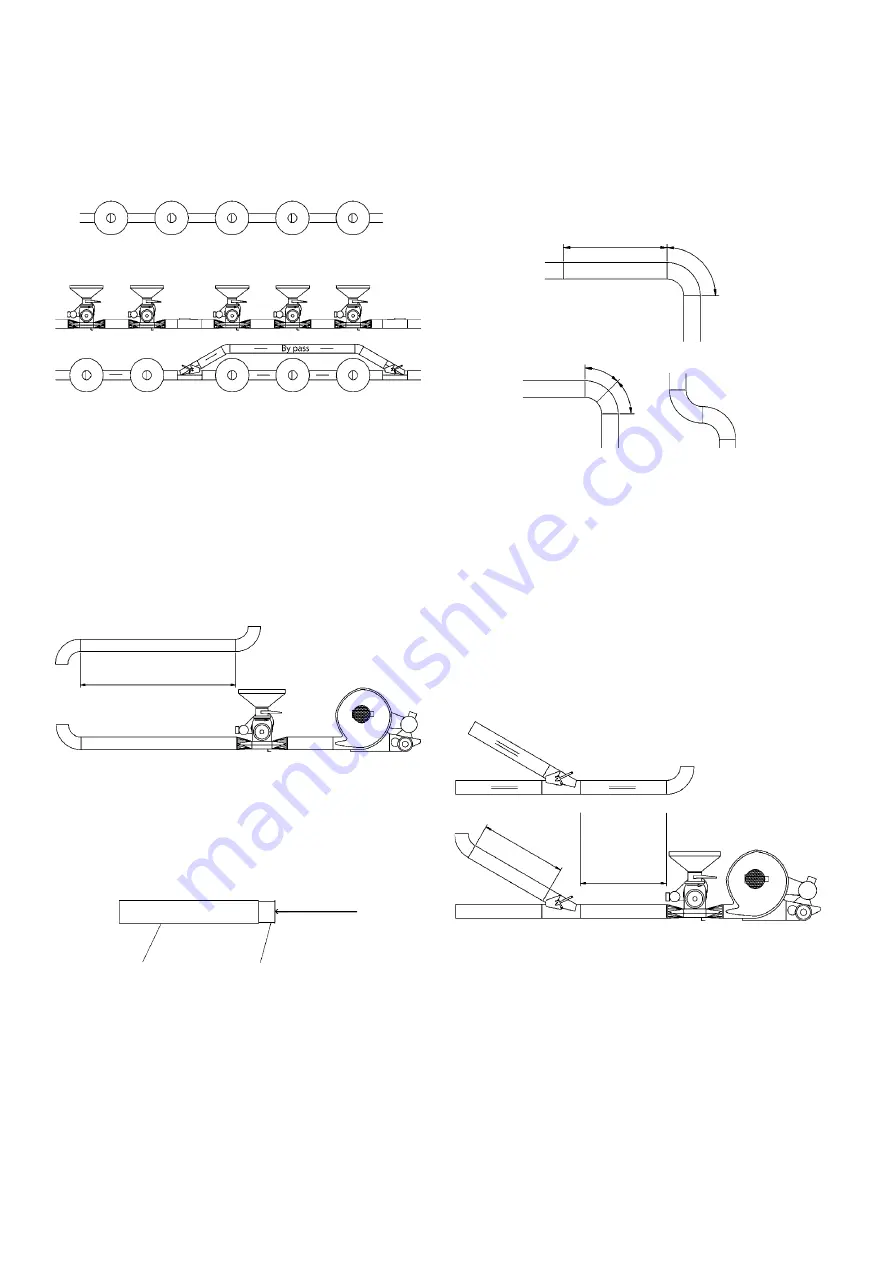
10
General principles for instal-
lation and use of pipes and
bends:
Distance between bends
There should be a minimum distance of 2 m
(6.6 ft) between any flow direction change, i.e.
between any bends. With larger TRL blowers moving
higher capacities, longer distances are even better.
This does not apply if only air is blown through the
system.
Installation of telescopes
Always ensure that telescopic pipes are installed so
that the sharp edge points in the flow direction - not
against. If telescopes are installed in the wrong way,
damage to the material may occur. When conveying
e.g. paper waste, a reverse telescope will create
plugging problems.
Flow direction
OK160 Pipe
OK160 Telescop
Right
Wrong
Wrong
1 m (3.3 ft)
90°
45°
45°
Wrong
Right
Min. 2 m (6.6 ft)
Installation of bends
Do not put 2 bends back to back, as this will cause
damage to the material and there will be a loss of
capacity.
It is recommended to use a heavier 1 m (3.3 ft) pipe
(OKR/OKD) following each bend to compensate for
wear.
Diverters
When using diverters, the same applies as mentioned
above for bends, however, if space is narrow, 1 m (3.3
ft) between a bend and a diverter is recommended.
If necessary, the installation of a bend following the
diverter in the outlet direction is acceptable, but this
will create a considerably faster wear of the bend. Do
not blow material directly from a bend into the diverter,
this will create a fast wear of the diverter.
It is possible to blow in each direction and suck
through an OK160 diverter, type 122 000 690.
Blowing direction
Never attempt to blow material downwards, where
gravity will add to the conveying speed. Damage to the
material and pipes (bends) will occur due to the high
speed.
Flexible piping
Do not attempt to blow through flexible down pipe
sections. Damage to the material and to the flexible
pipe will occur.
Min. 1 m
(3.3 ft)
Min. 1 m
(3.3 ft)


